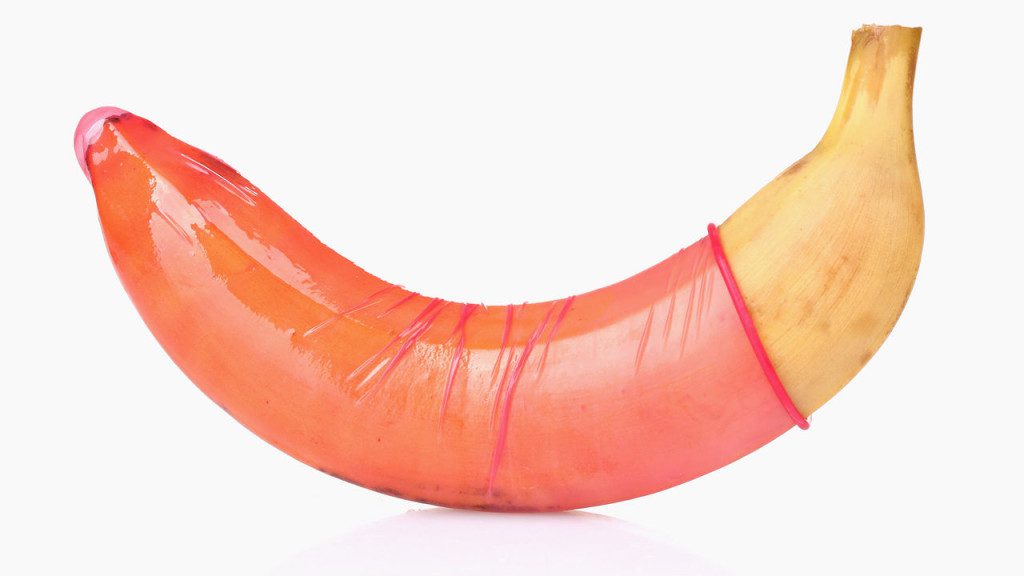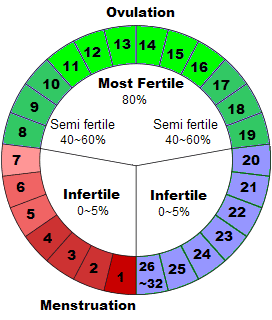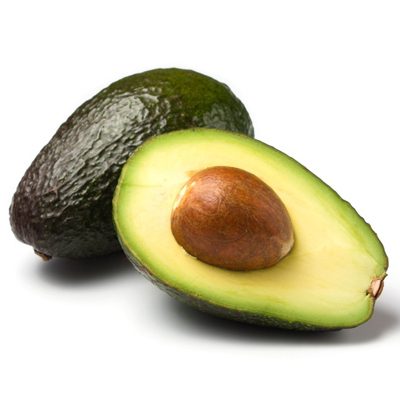When sex comes to mind we often don’t think about how we can be environmentally-friendly – we don’t think about being wasteful or environmental consequences. In our minds we may see the products and resources we use as being 100% worth it, but on the other hand, we’re all different, and others may prioritize alternatives that are more natural for their bodies and the planet, as well as effective. They may have questions that have never crossed some of our minds, such as “how many condoms do I go through in a year?”, “what happens to my hormonal birth control pills when I miss a couple and throw them away?”, or “how many tampons and pads do I use a year, and what happens to them?” In spirit of the Growing Green festival in Bridgewater which was this past Saturday, we decided to answer a few of these questions and talk about them with visitors at the festival. As strange and unrelated as it may seem at first there are so many connections between sexual health and the environment, and we say it is very possible to be safe during sex and manage your monthly gift all while also doing your part for the environment.
The Condom
In the United States used condoms only make up 0.001% of the 152 million tons of garbage in landfills nationwide, which is basically the only option when it comes to disposal. Many people may try to flush their condoms, but that is a bad idea – for your septic system and environment. The best thing to do is wrap the used condom in tissue paper and discard in the trash.

So what types are biodegradable? The latex condom is very commonly used and is surprisingly a safe and environmentally friendly option. Although it is considered waste, it is biodegradable (depending on the lube), comes in fair trade types and can be effective at protecting against STBBIs (Sexually Transmitted and Blood-Borne Infections) and pregnancy. Some people however are allergic to latex and require different condom options. The best latex-free option in terms of the environment is the lambskin condom. It is made from sheep intestines and is very biodegradable, it cannot however protect against STBBIs. This is because intestines are porous and although sperm are too large to get through, viruses aren’t. Condoms such as these are recommended to be used mainly as pregnancy prevention in monogamous, STBBI -tested relationships.
In terms of protecting against STBBIs there are polyurethane and polyisoprene condoms, but they are made of plastic that won’t break down. Although they are reliable options, this can be worth noting. The female, or internal, condom as well is another reliable option, as it protects the vagina from the inside and covers more surface area externally for further protection. The female/internal condom however is made from nitrile and like the others, does not break down as easily as lambskin or latex.
You may also be wondering what you can do about the material that comes along with condom use. The good news is bodily fluids break down and the box can be recycled, however the plastic wrapping cannot. Added chemicals and lubricants may also slow down the break down process of the condom as well, regardless of the type of condom used.
The Pill: What happens to my leftover hormones?

There’s no need to panic, yes hormones get into our waterways, but it’s not necessarily a concern when it comes to birth control. Most of the estrogen that gets into the water and affects our species comes from livestock/agriculture (actually five times more), BPA plastics and our own waste. Interestingly enough, even though all women excrete estrogen anyway, the amount of synthetic estrogen from leftover pills is still less than the natural estrogen excreted by a pregnant person. Although it’s true natural estrogen is more prevalent in our water from excretion, synthetic estrogen in pills does take longer to break down.

Natural and synthetic estrogen or ethinyl estradiol (EE2) is actually part of a larger group of natural and synthetic hormones which can affect ecosystems in large potent quantities. In worse case scenarios it can lead to offspring of species that are intersex or infertile. EE2 can be hard to filter out of water, so better treatment technology is needed or perhaps pharmaceutical companies who could produce fewer hormones in a pill that’s just as effective. Safe disposal is an alternative to simply not taking the pill for those in fear of releasing hormones. Taking your packaged pills to your pharmacy for safe disposal is encouraged.
Regardless of the impact the pill is a very reliable method in pregnancy prevention when used correctly and an obvious outcome of sex can be the creation of a human being. Birth control pills are the best studied form of contraception and there are great benefits to taking the pill making it still a green option. Bringing another human into the world, especially when not prepared or knowledgeable about the environment, can produce a lot of waste and negative effects compared to choosing family timing and size more efficiently.
What is the best birth control option in terms of effectiveness and not generating waste or hormones?
The IUD is the most effective birth control option to date with effectiveness at greater than 98%, and is one of the most eco-friendly methods. IUD stands for ‘intrauterine device’ and is made from silicone and copper. It is inserted into the cervix by an OBGYN where it can stay for 5-12 years, producing no waste and emitting no hormones. The copper on the IUD acts as a natural spermicide. The IUS is almost the exact same as the IUD, but is more than 99% effective as it emits hormones. The IUS can also prevent periods from coming, thus limiting extra waste.
What other birth control methods are considered ‘green’?
Other forms of contraception that involve little waste are the diaphragm, patch and ring. They are good options, but are ultimately plastic devices. The diaphragm is an inserted silicon barrier reusable for up to 2 years, while the ring and patch emit hormones. The ring is replaced monthly, whereas the patch is replaced weekly with individual wrapping & leftover hormones.
Methods of birth control that produce no waste are sterilization, vasectomies or tubal ligation. They eliminate the need for other methods, however are not as effective as IUD and are usually irreversible.
Withdrawal or the “pull-out” method requires no barriers, but relies on the penis’s ability to get out quickly. This is not a very effective method as there is a lot of room for human error and pre-cum still occurs before the man is likely to pull out.

Another type of birth control is FAM (the family awareness method). Someone who knows their body well may know when they are ovulating by different means such as changes in their body or may record and track their temperature each morning or take fertility tests consistently. Even though this method can be considered green and natural, it is usually not very effective due to human error as well and can depend on the use of many fertility tests and planners to be as accurate as possible. With accurate planning it can still be at best only 90% effective. Withdrawal and FAM may be good options for couples who may be not necessarily trying to get pregnant at the time, but would be ok if it happened a little early.
What lubes are safe besides water-based and silicone?

There are two main types – natural oil-based and synthetic oil-based lubes I want to talk about. While you can buy your own natural or organic lube mixtures in many stores, there are safe options you can use around your home, and these fall under natural oil-based lubes. These lubricants are easily accessible, safe, low-cost and effective. The general rule is that if it is edible, your body should be able to clear it out much easier than others. Eatable options include oils and foods found at home like olive and vegetable oil, coconut oil, avocado and apricot. The only problem is that these natural lubricants can’t be used with latex condoms or when you are concerned about STBBIs, as they can easily break down condoms. They can however be used with nitrile, polyisoprene or polyurethane condoms.
Synthetic oil-based lubricants can’t be cleared out as well as natural oils, as it usually takes the body longer. Types include Vaseline, mineral oil and body lotions. They are good options for external masturbation use, not necessarily internal as they are heavier and can irritate the vulva and break down condoms. They can however be used with lambskin condoms. They are relatively easy to get and can be cheap, but synthetic oils easily stain fabrics, and with the breakdown of condoms can put you at risk for STBBIs.
It’s important to note that these are good options for STBBI-free monogamous relationships or personal use. Safe lubes also include store-bought natural/organic lubes (check out information on box), water and silicone-based. Also sometimes lubes are not necessary, as we can produce more of our own natural lubrication on our own with a healthy lifestyle – including healthy eating, exercise and lots of sleep.
Reusable Pads, Menstrual Cups & Sponges
The amount of disposable pads and tampons that go into our landfills each year is overwhelming, especially the amount of tampons and applicators found in water bodies. If most people are using these products monthly and are discarding the packaging and plastics that come with it, that’s a lot of waste – but there are alternatives! Lunapads which are reusable pads sold online save more than one million pads and tampons from landing in landfills each month alone. By using alternative options we can reduce our impact, environmental by-products, resource consumption, disposables and plastics.
Reusable pads are cloth linings for people to use during their periods to absorb menstrual blood and protect their clothing. They are easy and cheap to make yourself with printable patterns using simple 100% cotton flannel fabric (old shirts, etc.) and absorptive material such as pieces of face cloths and towels, or they can be purchased – mainly online. What makes reusable pads so great for the environment is that you are recycling and reusing old materials and you don’t need to keep buying products! You simply wash the pad after use and hang it to dry. Over time you save money, as disposable pads cost more long term. The pads are safe and require no packaging, where disposable pads and tampons are made of plastic, cotton and pulp paper, and contain chemical adhesives. Another plus is when you’re done with them you can throw them in the compost bin! They come as well in many fun designs and you can be creative when you create your own personalized type to best suit/fit you.

Menstrual cups and sponges are alternative options as well to disposable pads and tampons. Cups are folded and inserted into the vagina to collect the blood inside, while sponges act more like a tampon – that is rinsed and cleaned to be reusable. They are both easy to remove and come in many sizes and shapes that may work best for you. Two types of cups you can purchase are Diva Cups and Soft Cups. Like reusable pads they save millions of disposable menstrual supplies from being used.
If you choose to use sponges, though, be sure to learn how to clean and replace them properly to avoid toxic shock syndrome. Toxic shock syndrome is caused by a bacteria that can be made worse by wearing something internally, like a tampon. There isn’t enough evidence to say that sponges do or do not cause toxic shock syndrome, so proceed carefully.
Tips
- Enhance your libido, though healthy eating, exercise and taking care of your body! Chemicals from pharmaceutical drugs or the use of alcohol, as well as other aphrodisiacs are usually not as healthy or effective as they appear.
- Flush Nothing – no condoms, plastic, tampons, applicators, pads, etc. – You’ll regret it and the environment won’t thank you.
- Sex Toys can be green. Whether it is rechargeable batteries or solar power or even glass toys made with fewer chemicals.
- Make everyday Earth Day – Dimming lights sets the mood and reduces your footprint.. you might as well turn down the heat and cuddle or shower and save water while you’re at it.
For further information…
https://www.arhp.org/publications-and-resources/contraception-journal/august-2011
Disposing A Condom Plus The Environmentally Conscious Condom Options
http://greatist.com/happiness/sex-tips-good-for-environment
http://www.livescience.com/20532-birth-control-water-pollution.html
http://lunapads.com/learn/why-switch/environment
http://www.ourbodiesourselves.org/health-info/how-to-choose-lubricant/
http://www.popsci.com/blog-network/ladybits/your-guide-eco-friendly-birth-control

